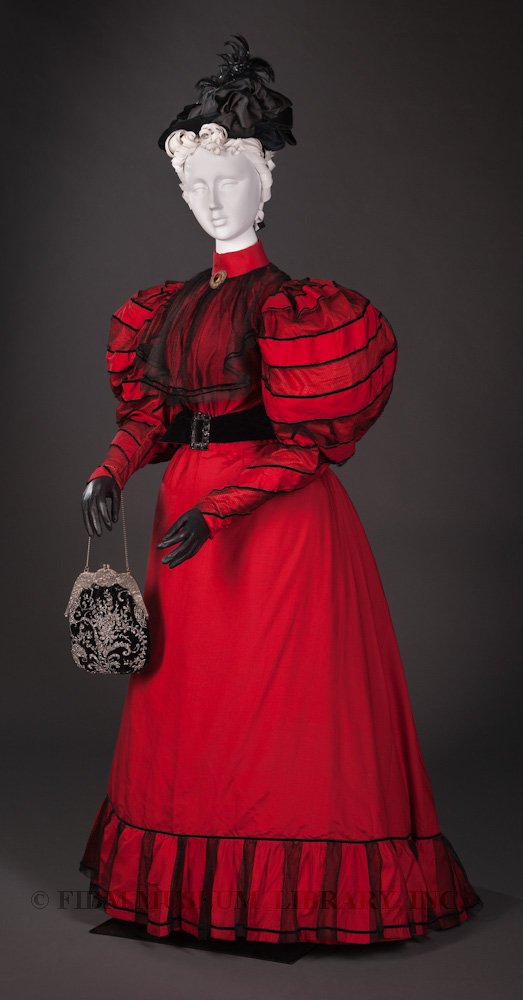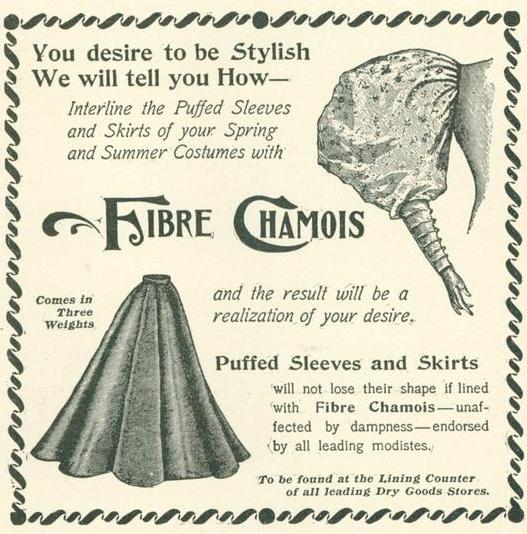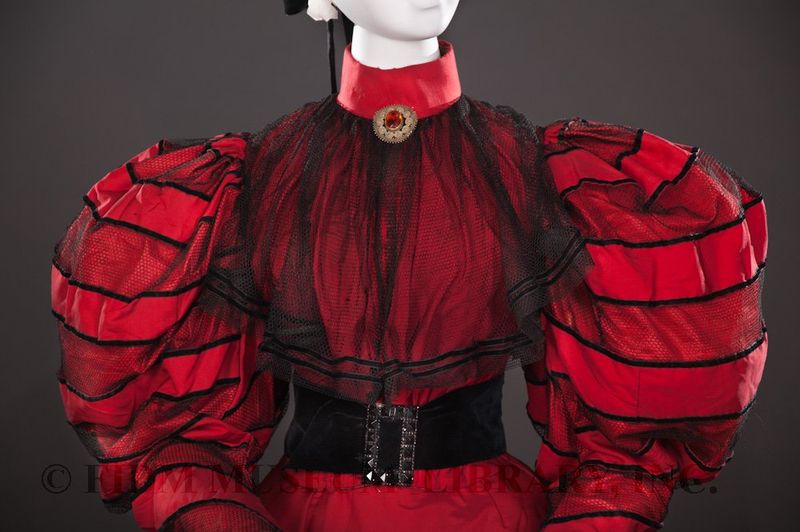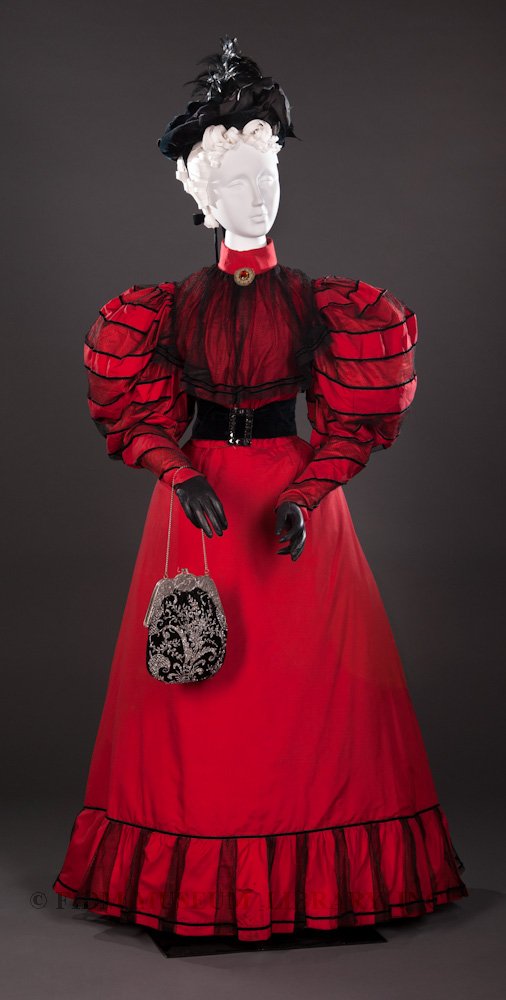In the 1890s, most women’s dresses were made-to-measure. Though ready-made clothing was increasingly common, garments that required a precise fit or featured delicate embellishment were typically custom-made, either by the wearer herself, or by a trusted seamstress. Though some women had the financial means to purchase their wardrobes in Paris, most women relied on the advice of their (hopefully up-to-date) dressmaker, example gowns made in the latest style, or on printed descriptions of new fashions. Fashion magazines gave detailed descriptions of stylish garments so that women could make, or have made, approximations of the styles described. This passage from June 1894 is typically detailed: "A dainty organdie with a pale lavender ground, deeply spotted with deep purple flowerets, has two simple six-inch ruffles finishing the skirt, each ruffle trimmed with two rows of narrow moire ribbon in the deep purple shade."1 The description continues, providing the reader with enough information on cut, material, and embellishment to enable the creation of a similar garment. Simple line drawings sometimes accompanied these written descriptions.
 Woman's ensemble
Woman's ensemble
1894-96
Silk
Gift of the Manlove Family
S2006.870.22AB
This red and black two-piece ensemble was part of a large 2006 donation to the FIDM Museum. Consisting of garments and accessories worn by different generations of one family, it included objects dating from about 1850 to 1950. Some of the garments, like this mauve and floral day ensemble, have labels, but most are unlabelled, including this ensemble. An established dressmaker working from a brick-and-mortar shop would have stitched a label inside the finished garment. The absence of a label indicates that the garments were made either by a talented home-sewer, or a skilled dressmaker who didn't have enough capital to open her own shop.2 Though we can't attribute this striking ensemble to a specific maker, it is definitely a stylish, well-made example of mid-1890s fashion.
As we described in this post, 1890s garments can usually be dated by sleeve shape. The exaggerated gigot or leg o' mutton sleeves seen on this ensemble were popular in the mid-1890s. To achieve this abundantly full silhouette, each sleeve was made from about 1 yard of fabric and required an understructure. Fibre Chamois, a lightweight, flexible interlining, was one way to keep the popular leg o' mutton sleeves full and shapely.
 Fibre Chamois advertisement, 1895
Fibre Chamois advertisement, 1895
The tall, standing collar indicates a dress for day wear. Victorian etiquette dictated that a proper woman didn’t reveal herself in public, so day dress, particularly that worn for traveling outside the home, featured high-necklines, long sleeves and long skirts. In contrast, evening wear was typically revealing, with short sleeves and lower bodices. The high collar, full sleeves and decorative black net flounce on this dress obscure the natural silhouette, exemplifying the 1896 maxim: "Revealed form is vulgar, suggested form poetic."2 Elegant, carefully fitted gloves both disguised and accentuated the hands.
Skirts of this era were relatively plain, a foil for highly decorative bodices. The waistline was at or near the natural waist, and appeared relatively tiny below puffed leg o' mutton sleeves. As seen here, skirt fronts were typically flat, with some fullness at the back. Here, the back of the skirt is gathered at the waist and has a triangular godet for increased fullness. This style of skirt typically required about 6 yards of fabric. Combined with 2 yards for the sleeves and 1-2 yards for the bodice, even a modestly fashionable day dress required at least 9 yards of material.
1 Schubert, Eva A. "A Carnival of Color: The Summer Girl Will Revel in Rainbow Hues." The Washington Post 3 June 1894: 19.
2 It wasn't uncommon for small-scale dressmakers to visit clients in their home, returning for fittings and to deliver the final product.
2 Cooke, Maud C. Social Life; or The Manners and Customs of
Polite Society Philadelphia: Cooperative Publishing Co., 1896: 390.





Beautiful ensemble. Is there any information about the undergarments that goes along with it?
Those sleeves look bigger than her torso 😀 :O !
An exquisite colour, by the way.
Christine,
We haven’t yet discussed 1890s undergarments on the blog. We’ll try to remedy that oversight soon!
In general, the layer closest to the body would have been a chemise or combination, followed by 1-2 petticoats that echoed the silhouette of the skirt. A corset would also have been worn, covered by a cotton or linen corset cover, sometimes called a camisole. Hope this info provides you with a bit of insight into 1890s undergarments.
Exquisite! The color is amazing and of course, those gigot sleeves.